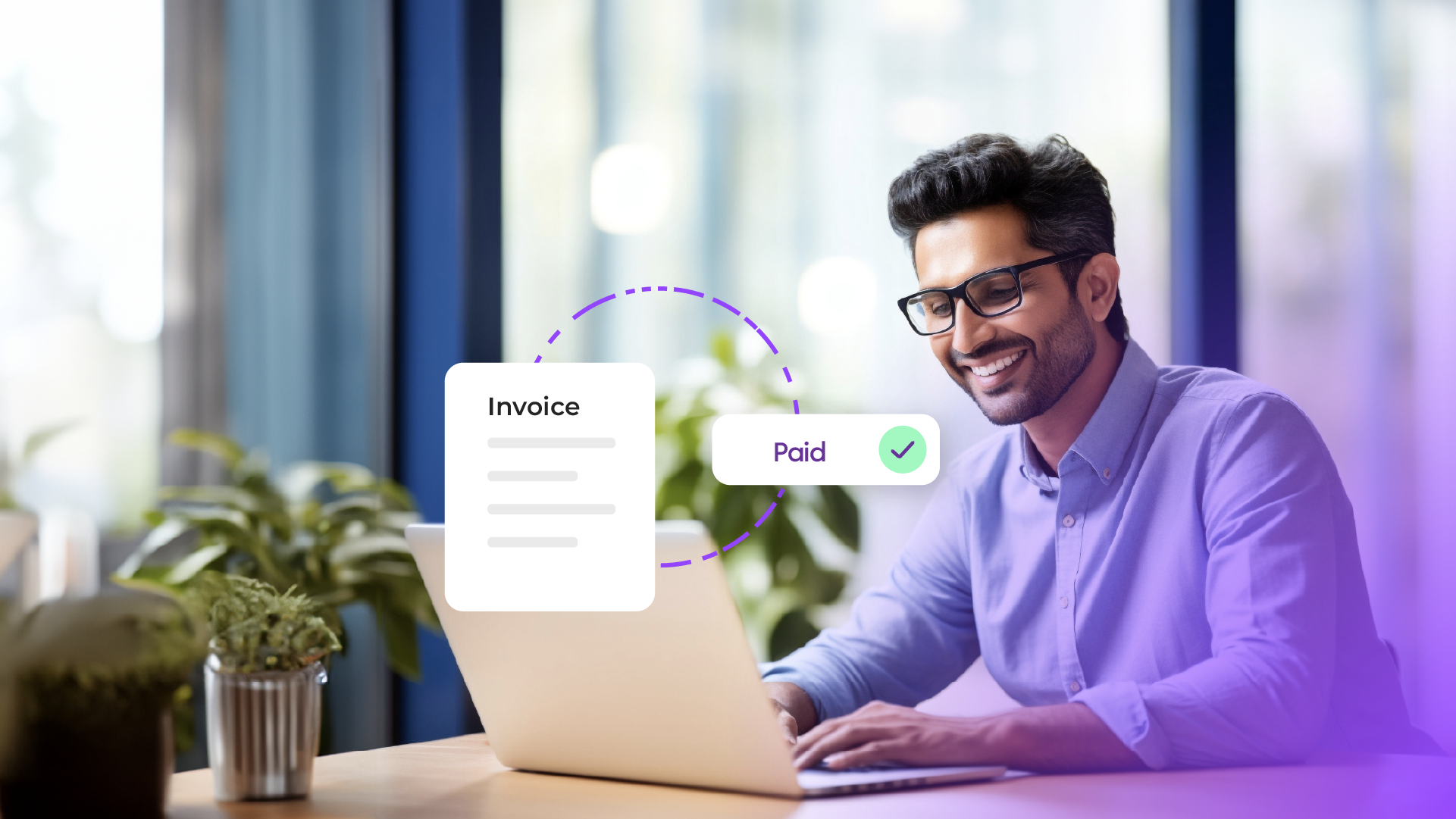Invoice automation in simple words, is the use of software to simplify and streamline the process of receiving, validating, approving, and paying invoices. In the early days invoice automation was typically used for large enterprises, due to its high cost and complexity, however over the years it has advanced dramatically with the emergence and easy availability of the internet and technologies.
Importance of Invoice Automation in modern businesses:
There is no doubt why invoice automation has become mainstream. According to a study by Ardent Partners, about 80% of organizations have already implemented the technology or are planning to opt for it. Why you might ask? These automated solutions are simple to operate and easy to manage. Organizations are able to process documents faster without any errors. Research by PwC highlights that with the power of automation, businesses can save 30–40% of the hours typically spent on such manual processes. It cuts down on manual tasks like data entry, which reduces errors and makes everything faster and smoother. This makes invoice automation and accounts payable workflows more efficient overall.
The Invoice Processing Workflow:
A. Traditional manual invoice processing
The invoice processing cycle is a workflow that includes the following sequential steps:
1. Receiving invoices: When an invoice arrives, whether through mail, email, fax, or electronic means, it kicks off the payment process. It’s crucial to handle all invoices uniformly to maintain efficiency and accuracy, minimizing errors and confusion. The key data needs to be captured from the invoice including:
– Invoice date
– Contact details for both parties
– Description and quantity of products/services
– Unit pricing and total amount due
– Additional payment details like terms and shipping info
The recipient ensures consistency across all invoices and promptly cross-reference the data with other documents to ensure accuracy. If there are any discrepancies, the vendor needs to be contacted. The point that has to be noted here is that some vendors may send invoices, which are more like sales quotes than formal invoices. These require a different handling process.
2. Data entry and validation: After receiving an invoice, the next step is recording the data and matching/validating it with relevant documents like purchase orders. This ensures accuracy and prevents duplicate payments or fraud. Key checks include:
– Confirming fees, totals, and taxes for accuracy.
– Verifying the order against what was actually received.
– Detecting any signs of fraud, such as duplicate invoices or unapproved vendors.
3. Approval routing: In the traditional manual invoicing process, depending on the company’s size, multiple executives can deny or approve the payment, leading to confusion and delay. The Paper invoices were sent via interoffice mail to the physical inbox. Then came email; where invoices are attached as a digital document and sent to a virtual inbox. These approaches are sluggish, and leave a lot of room for documents to get lost, misunderstandings to occur, or people to drag their feet.
4. Payment processing: Once the invoice is approved, it’s time to pay the vendor. In order to process the payment, the required informations are:
- The total owed
- Vendor information
- Payment identifiers (like account number or invoice number)
- Types of payment accepted
The most common method of sending payment used to be via check. These days, ACH or wire transfers are the preferred way. Approved invoices are set for payment based on negotiations done with the vendor. In some cases, businesses choose to pay an invoice early to take advantage of a discount. For example, ‘1% net 10’ means that if you pay that vendor within 10 days of receiving the invoice, you can deduct 1% off the total amount owed. However, most businesses take a lot of time in the approval process and lose the opportunity to have an early payment discount.
5. Archiving and record-keeping: Once the payment is processed, all of the final data is captured and archived. The general ledger entries for the payment debits and any other relevant accounting can be made. Additionally, invoice images and supporting documents, like purchase orders or shipping receipts, are saved in a secure and searchable document repository. This ensures a convenient audit that is easily accessed whenever needed. Accurate data on accounts payables is critical to producing a balance sheet that is correct.
Challenges of manual invoice processing
The more vendors you have, the more complex the operation gets. With the growing business, there is a need for an efficient system that would reduce the hassle and challenge that the business might have with manual invoice processing. The challenges include –
- Time-consuming and labor-intensive: Manual processing requires significant time and effort, slowing down the entire invoicing process. As the manual invoicing process involves multiple interventions and involvement of parties, it takes a huge chunk of time from the business, which can be used productively in other tasks.
- Prone to human errors: Manual entry increases the risk of mistakes like typos or misinterpretation of data, leading to inaccuracies in records. There are chances and instances where important documents can be misplaced. Without a consolidated system for organizing paper copies, PDFs, and other formats, the workflow becomes chaotic. Most importantly, with a pile of paperwork, the chance of inaccuracy shoots up leading to unwanted mistakes in the calculations. In a rush to process invoices, errors in routing can occur.
- Delays in payment processing: Manual workflows can result in delays in approving and paying invoices, impacting vendor relationships and potentially incurring late fees.
- Difficulty in tracking and auditing: Without automated systems, tracking invoices and auditing processes becomes challenging, increasing the risk of lost or misplaced documents and making it harder to ensure compliance with regulations.
Invoice Automation Technologies
1. Optical Character Recognition(OCR):
Optical character recognition is a technology that would help to convert, cluttered, unstructured data into structured formats which can be operated by machines for invoice automation and accounts payable. IBM has reported that 80% of the worldwide data is going to be unstructured by the coming year.
In Invoice automation, OCR plays a crucial role in digitizing paper-reliant processes. By extracting integral information from the documents and converting it into machine-readable formats.
OCR helps eliminate the manual data entry required from human users and, instead, facilitates faster and more efficient data transfers throughout your business workflow. Having all the reports digitized, you can see the originality of the report and improve on your workflow.
2. Artificial Intelligence (AI) and Machine Learning (ML) in invoice automation:
- AI and ML in data extraction and validation: AI and ML are like the super-smart brains behind invoice automation. They extract relevant information from the invoices, categorize and detect discrepancies, if any are there.
- Intelligent Invoice Categorization and Routing: AI and ML can quickly pull out important stuff from invoices, and the vendor, like the invoice number, date, and how much money is involved. Plus, they get better at it over time by learning from their previous usage. It can sort invoices into different categories based on things like who sent them and ensure each invoice goes to the right place for processing. ML algorithms analyze the previous data and optimize categorization accuracy, while AI-driven routing ensures invoices are directed to the appropriate departments or individuals for seamless processing.
- Anomaly Detection and Fraud Prevention: AI and ML algorithms can detect irregularities and patterns indicative of fraudulent activity within invoice data. Hence the invoices and financial statements are free of any frauds.
3. Robotic Process Automation (RPA)
Role of RPA in invoice automation:
RPA stands for Robotic Process Automation. It uses software robots to automate the digital activities usually performed by human workers.
It’s all about using these ‘bots’ to manage low-value, repetitive jobs. According to McKinsey, 45% of the employees’ time can be freed by using current automation technology, especially in accounts payable and invoice automation.
RPA Industry Use Case:
1. RPA in Financial Services and Banking:
- Automating reporting tasks for reconciliations, monthly closing, management reports, and mortgage processing.
- Streamlining accounts payable and accounts receivable processes.
- Fraud detection3
2. RPA in Manufacturing:
- Invoice processing
- Supply chain management
- Accounts payable processing
3. RPA in Telecoms:
- Network management customer onboarding or offboarding
- Data transformation
- Debt collection
- Expense control
- First Call Resolution (FCR)
4. RPA for Finance and Accounting Teams:
- Expense reimbursement
- Financial planning and analysis (FP&A)
- Accounts payable and accounts receivable processing
- Accounting change
- Account and bank reconciliations
- Reporting
4. Electronic Data Interchange (EDI):
- Importance of EDI: Electronic Data Interchange (EDI) is the digital exchange of business documents, like invoices, between companies using a standardized format. It’s crucial in invoice automation because it replaces manual processing with fast, accurate electronic communication. EDI streamlines the entire invoicing process, from creation to payment, reducing errors, costs, and processing time.
- EDI Standards and Formats for Invoice Exchange: In invoice automation, EDI relies on standardized formats to ensure compatibility and smooth communication between different systems. Common standards include ANSI X12, EDIFACT, and XML. These formats define how invoice data is structured and transmitted electronically, ensuring consistency and interoperability across various software platforms and organizations. By adhering to these standards, businesses can exchange invoices electronically, enhancing efficiency and reducing manual effort in invoice processing.
Benefits of Invoice Automation
- Increased Efficiency and Productivity: Automation streamlines the entire invoice processing workflow, eliminating time-consuming manual tasks. This means your finance teams have more time for higher-value tasks.
- Cost Savings and Reduced Manual Labor: By automating repetitive tasks like data entry and validation, invoice automation reduces the need for manual labor. This leads to significant cost savings over time, as businesses can allocate resources more efficiently and avoid expenses associated with manual processing errors.
- Improved Accuracy and Reduced Errors: Automation minimizes the risk of human error inherent in manual invoice processing. With automated data extraction, validation, and matching, the likelihood of inaccuracies and discrepancies is greatly reduced.
- Faster Payment Processing and Better Vendor Relationships: Automated invoice processing accelerates payment cycles, enabling businesses to pay vendors promptly and maintain positive relationships. This can lead to discounts for early payments and enhanced vendor satisfaction, ultimately strengthening partnerships and fostering a more favorable business environment.
- Enhanced Visibility, Control, Compliance, and Audit Readiness: Automating invoice processing gives businesses a clear view of every step, from getting the invoice to paying it. It also includes tools to track and monitor everything automatically. This helps companies manage their finances better, making sure invoices are handled quickly and accurately. Plus, invoice automation makes it easier to follow rules and policies about processing invoices, so businesses stay on the right side of the law. By using automation, companies can have a smoother process overall, with better control, compliance, and readiness for audits.
Implementing Invoice Automation
Here’s a structured plan for implementing invoice automation:
1. Assessing Current Invoice Processing Challenges: Begin by identifying the pain points and inefficiencies in your current invoice processing workflow. This may include manual data entry errors, lengthy approval cycles, or lack of visibility into invoice status.
2. Defining Goals and Objectives for Automation: Determine what you aim to achieve with invoice automation. This could involve reducing processing time, minimizing errors, improving compliance, or enhancing vendor relationships.
3. Choosing the Right Invoice Automation Solution:
- On-Premise Vs Cloud Based Solutions: Evaluate the pros and cons of on-premise and cloud-based solutions based on factors such as scalability, maintenance requirements, security, and accessibility.
- Integration with Existing Systems: Ensure that the chosen solution seamlessly integrates with your existing ERP (Enterprise Resource Planning) and accounting software to facilitate data exchange and streamline workflows.
4. Change Management and User Adoption Strategies: Recognize that implementing invoice automation involves changes in processes and workflows. Come up with a comprehensive change management plan that includes communication, training, and support to ensure smooth adoption by users.
5. Measuring and Monitoring the Success of Invoice Automation: Establish key performance indicators (KPIs) to track the impact of automation, such as processing time, error rates, cost savings, and vendor satisfaction. Continuously monitor these metrics to assess the effectiveness of the automation solution and identify areas for improvement.
Case Studies and Success Stories
- Example of a Company Successfully Implementing Invoice Automation: Tikkurila: Tikkurila is a prominent Nordic manufacturer and seller of paint and coatings. Faced with the challenge of managing 150,000 invoices annually within a decentralized Accounts Payable (AP) process, they sought to streamline their operations and gain better control over invoicing.Measurable Results and ROI Achieved Through Automation:
- Improved Efficiency: By implementing a plug-and-play solution from Medius that seamlessly integrated with their Microsoft Dynamics ERP, Tikkurila achieved a streamlined AP process. This resulted in significant efficiency gains, with a 93% touchless rate on invoices.
Enhanced Visibility and Control: Tikkurila now has a single system and standardized process for AP across the company, providing visibility and transparency from invoice receipt to payment. This centralized approach enables better control and management of their invoicing process.
Cost Savings: With increased automation and reduced manual tasks, Tikkurila likely experienced cost savings associated with decreased labor hours and improved operational efficiency.
The success story of Tikkurila highlights the transformative impact of invoice automation on streamlining AP processes, enhancing efficiency, and achieving greater control and visibility.
Future Trends and Developments
- Integration of Blockchain Technology in Invoice Processing: Businesses can ensure the authenticity and integrity of invoice data, reducing the risk of fraud and disputes by incorporating Blockchain technology that offers secure, transparent, and immutable records of transactions, making it well-suited for invoice processing, with an easy and streamlined payment process.
- Advancements in AI and ML for Invoice Automation: Predictive analytics powered by AI can forecast invoice processing times, optimize cash flow management, and identify potential bottlenecks or issues before they occur. It will enable systems to understand and interpret unstructured invoice data more accurately, further enhancing automation capabilities.
- Emergence of End-to-End Procure-to-Pay Automation Solutions: As businesses seek to streamline their entire procurement and payment processes, there will be a growing demand for end-to-end procure-to-pay (P2P) automation solutions.These solutions will integrate procurement, invoice processing, and payment functionalities into a single platform, providing seamless automation and visibility across the entire P2P lifecycle. Integration with supplier networks and marketplaces will enable businesses to automate vendor onboarding, purchase order generation, invoice reconciliation, and payment execution, resulting in faster processing times and improved supplier relationships.
Businesses stand to gain a competitive advantage by embracing automation. Organizations that manage the transition to a more highly automated business model can build strong advantages. The era of manual invoice handling and tedious image files and their associated inefficiencies is gradually giving way to the seamless integration of automation technologies into financial workflows.
The future advancements in AI, ML, and blockchain, enable even greater efficiency, accuracy, and security in invoice processing. End-to-end automation solutions will become the norm, offering seamless integration across the entire procure-to-pay lifecycle and driving enhanced visibility and control.





